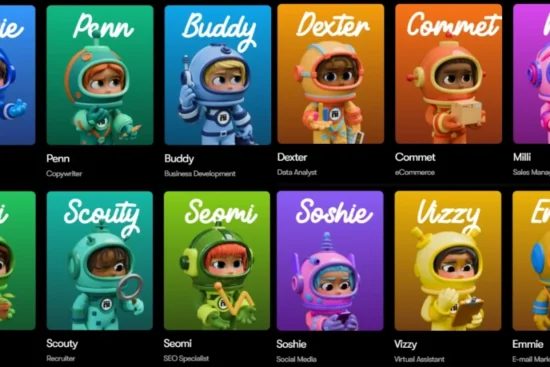
In recent years, virtual reality (VR) technology has taken a massive leap, bringing about a new era of immersive entertainment. From sci-fi fantasies to real-world simulations, next-gen VR gadgets have revolutionized the way we experience digital content. In this blog, we’ll explore the fascinating world of VR gadgets, the advancements that have unlocked previously unimaginable experiences, and how this technology is set to reshape the entertainment landscape. Geek speaker or not, get ready to dive into the boundless realm of virtual reality!
The Genesis of VR Gadgets: A Brief History
Before we delve into the exciting innovations, let’s take a quick trip down memory lane to understand how VR gadgets evolved over time. The concept of virtual reality dates back to the 1960s, but it wasn’t until the 1990s that we saw the first VR headsets with limited capabilities. Fast forward to today, and we have state-of-the-art devices that can transport users to realistic and fantastical worlds with just a few clicks.
Unleashing the Power of Immersion
The true magic of next-gen VR gadgets lies in their ability to immerse users fully into their virtual surroundings. These devices go beyond visual appeal, engaging multiple senses to create an incredibly lifelike experience. With high-resolution displays, intuitive motion tracking, and spatial audio, users can feel like they’re part of the virtual realm, blurring the line between fiction and reality.
The Rise of VR Gaming: A Paradigm Shift
Gaming enthusiasts have been at the forefront of adopting VR technology, and for a good reason. VR gaming takes interactive entertainment to unprecedented heights, putting players right into the heart of the action. Whether it’s battling mythical creatures, exploring alien worlds, or racing in futuristic cities, VR gaming delivers an adrenaline rush like never before.
Beyond Gaming: VR Applications in Diverse Industries
While gaming might be the poster child for VR, its applications extend far beyond the virtual realm of fun. Various industries have embraced VR to improve training, design, and marketing processes. From medical simulations that aid in surgical training to architectural walkthroughs that bring building designs to life, VR is making tangible differences in the real world.
Next-Gen VR Gadgets: What Sets Them Apart?
The current wave of VR gadgets is all about pushing boundaries and exceeding expectations. These cutting-edge devices boast increased field-of-view, reduced motion sickness, and better ergonomic designs for extended use. Moreover, they integrate AI and machine learning, adapting to users’ preferences and behavior, enhancing the overall experience.
Overcoming Barriers to VR Adoption
While VR technology has come a long way, it still faces challenges in achieving mass adoption. Cost, content availability, and the need for powerful hardware are some factors that have hindered widespread acceptance. However, as advancements continue and costs decrease, we can expect VR to become more accessible to the masses.
VR and the Future of Social Interaction
With the rise of virtual reality, social interactions are undergoing a transformation too. Virtual social platforms allow people from across the globe to gather in shared digital spaces, fostering connections, and experiences that transcend geographical boundaries. The social aspect of VR is paving the way for new forms of collaboration and entertainment.
Beyond VR: The Emergence of AR and MR
While VR is captivating, the future lies in the convergence of different realities. Augmented Reality (AR) and Mixed Reality (MR) are gaining momentum, offering unique experiences by blending the virtual and physical worlds seamlessly. These technologies open doors to a myriad of possibilities, from interactive learning to enhanced productivity.
Common Misconceptions About VR Gadgets
As with any emerging technology, VR comes with its share of misconceptions. Let’s debunk some common myths and set the record straight. VR gadgets are not just for gaming enthusiasts; they have practical applications across industries. Concerns about motion sickness are minimized with improved hardware and smoother frame rates. Moreover, VR experiences are not isolating; they can be social and collaborative.
The Bottom Line: Embrace the VR Revolution
The world of VR gadgets is continually evolving, offering unparalleled experiences that break the barriers of time and space. From gaming to education, VR is transforming the way we interact with digital content. As technology progresses, VR gadgets will become more accessible, enriching our lives in ways we couldn’t have imagined. So, gear up and step into the immersive world of next-gen VR gadgets, where the possibilities are boundless.
Commonly Asked Questions About VR Gadgets
Q1: Can VR gadgets be used for educational purposes?
Absolutely! VR has immense potential in education. It allows students to explore historical events, experience scientific phenomena, and engage in interactive learning experiences that enhance their understanding of complex concepts.
Q2: How do VR gadgets reduce motion sickness?
Motion sickness in VR is often caused by latency, low frame rates, or incorrect motion tracking. Next-gen VR gadgets use advanced technologies like low persistence displays and precise motion tracking to minimize motion sickness and provide smoother experiences.
Q3: Can VR gadgets be used for professional training?
Yes, VR is a game-changer for professional training. It provides a safe and immersive environment for employees to practice skills, such as surgical procedures, hazardous scenarios, or customer service, without real-world consequences.
Q4: What hardware do I need to use VR gadgets?
VR gadgets typically require a compatible PC or gaming console, a powerful graphics card, and a VR headset. Some standalone VR headsets eliminate the need for a PC, offering a more streamlined experience.
Q5: Is VR only for gamers?
No, VR has far-reaching applications beyond gaming. It’s utilized in industries like healthcare, architecture, military, and entertainment, opening up new possibilities for interactive experiences.












